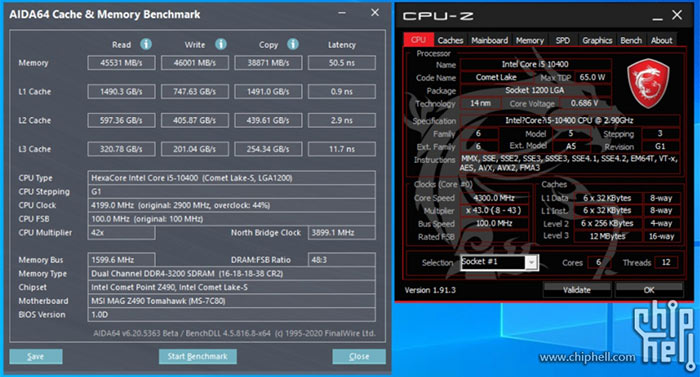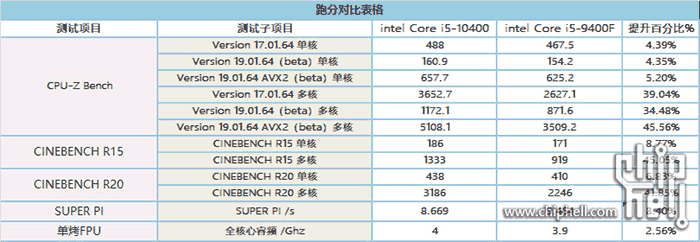HEXUS reported upon Intel's official launch / reveal of the 10th Gen Core (Comet Lake-S) processors for mainstream desktop at the end of April. At the time of writing Intel is still not permitting reviews to be published, but some leaked tests have been published nevertheless.
A ChipHell China forums user called 'Trailing to Fantasy City' (Google translate applied to name) claims to have tested one of the new Core i5 processors, which in the 10th gen desktop lineup from Intel are all hyperthreading enabled parts. Wouldn't it be interesting to see how one of these new Core i5 processors compares to the equivalent previous gen model? 'Trailing to Fantasy City' says he has done just that, and some benchmark comparisons and screenshots are provided.

First of all it is worth checking over and repeating the hardware tech specs which are officially available via the Intel Ark. I've summarised the lengthy key features and differences in a condensed table below:
|
Lithography |
14nm |
14nm |
|
Cores / Threads |
6 / 6 |
6 / 12 |
|
Base Clock |
2.9GHz |
2.9GHz |
|
Boost Clock |
4.1GHz |
4.3GHz |
|
Smart Cache |
9MB |
12MB |
|
iGPU |
None |
UHD 630 |
|
TDP |
65W |
65W |
'Trailing to Fantasy City' reportedly used a system based upon an MSI MAG Z490 Tomahawk motherboard, 16GB of DDR4 RAM, and an Nvidia GeForce RTX 2070 to run through a series of benchmarks such as CPU-Z Bench, Cinebench and Super Pi. Single and multi-thread comparisons were made too, where available. Unfortunately, it isn't clear what motherboard was used to support the older LGA1151 processor.

Pondering over the results, it isn't very surprising to see that the Intel Core i5-10400 was only marginally faster than its 9th gen predecessor in single threaded tasks. These results shows that the Comet Lake-S Core i5 processor is about 4 to 8 per cent faster in single threaded tasks. We know the Core i5-10400 has a 200MHz faster boost clock and more cache, and a couple of other tweaks might have been made to achieve this gain.
Predictably, the added hyperthreading makes a big difference in programs that make use of heavily threaded operations. Testing in apps like Cinebench show the new processor can render scenes at between 35 and 45 per cent faster.

Please take these reported results with a pinch of salt, although they do fall pretty closely in line with expectations for the inter-generational changes applied.
Source: ChipHell forums via VideoCardz.













